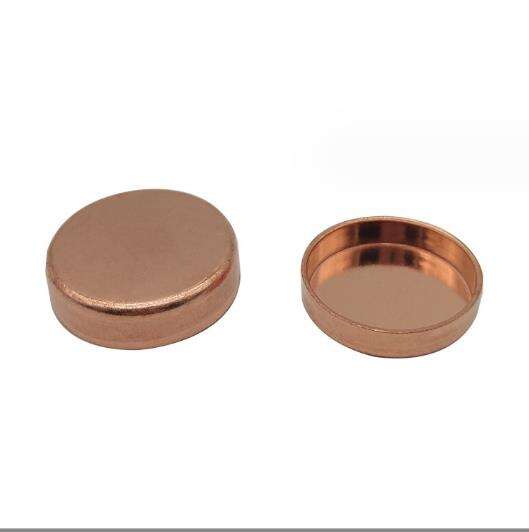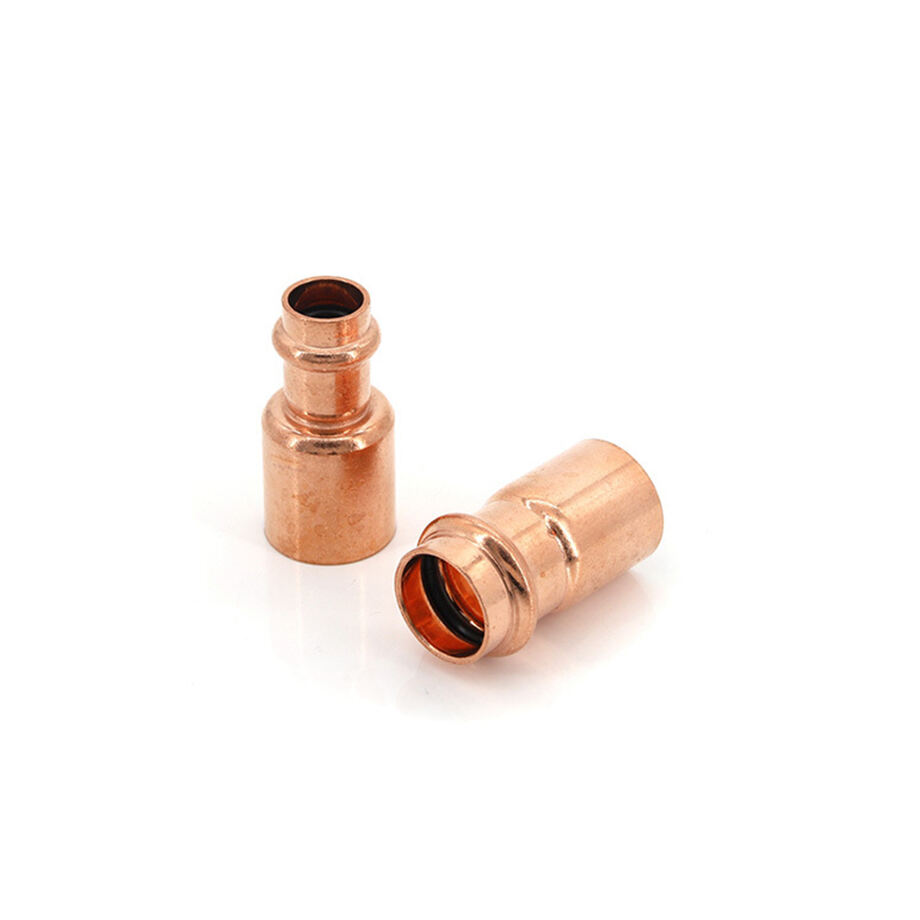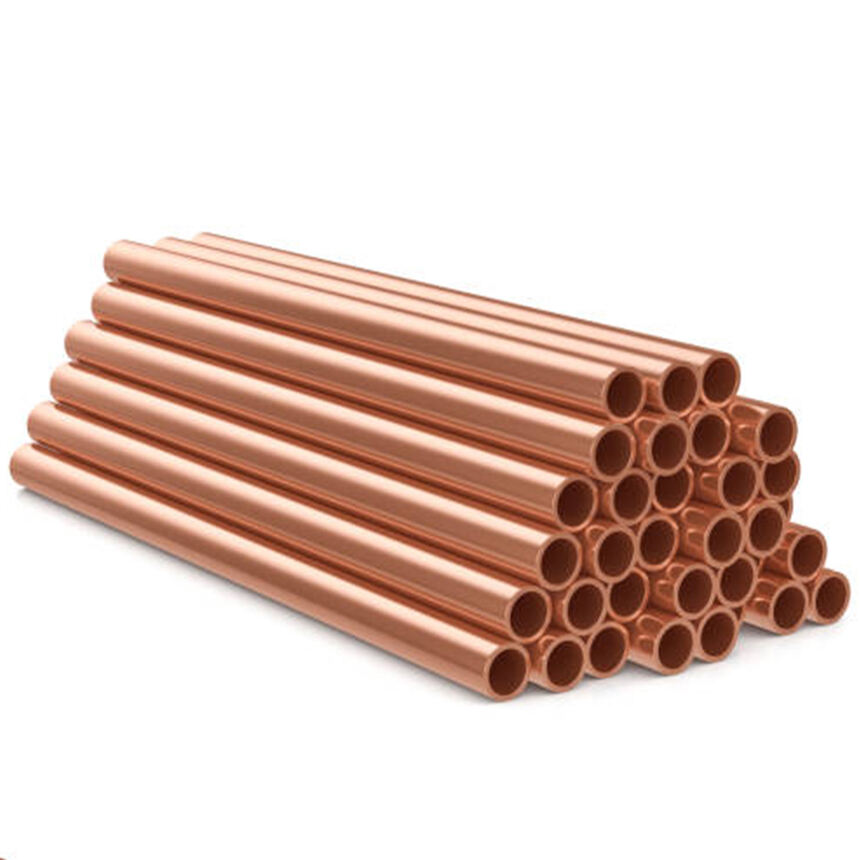Understanding Copper Pipe Fittings Procurement Essentials
Why Material Quality Impacts Long-Term Performance
The quality of copper used in pipe fittings has a direct impact on their long-term performance, influencing durability, corrosion resistance, and lifespan. High-quality copper fittings are less susceptible to leaks and consistent in performance, which is essential for both residential and industrial applications. When opting for superior-grade materials, you're investing in fittings that resist environmental factors and maintain functionality over years. Industry studies have shown that high-grade copper fittings can last significantly longer, reducing repair and replacement costs. Experts and organizations such as the Copper Development Association have often stressed the importance of careful material selection in procurement to ensure optimal durability and safety in plumbing systems.
Key Standards for Industrial-Grade Copper Fittings
Ensuring that copper fittings meet essential standards is crucial for maintaining safety, reliability, and compliance in industrial applications. Standards such as ASTM (American Society for Testing and Materials) and ISO (International Organization for Standardization) set the benchmarks for high-quality manufacturing processes and materials. Adhering to these standards guarantees that the copper fittings you procure will withstand rigorous environmental conditions and operational demands effectively. These guidelines are supported by regulatory frameworks that oversee the implementation and usage of copper fittings in various industries, ensuring that they meet all necessary criteria for safe use. Focusing on these standards not only enables compliance but also enhances the overall performance and longevity of the copper fittings in practical applications.
Types of Copper Fittings and Their Applications
Sweat vs Compression vs Push-Fit: Comparison Guide
Understanding the differences between sweat, compression, and push-fit fittings is essential for selecting the appropriate solution for plumbing and HVAC systems. Sweat fittings, often used for permanent installations, require soldering to create a leak-free joint. This method suits professionals who need secure connections but demands skill and time. Compression fittings are a more convenient option, utilizing a compression ring to seal connections. They are ideal for applications needing disassembly for maintenance, accommodating amateurs as well. Push-fit fittings, like Shark-Bite, are increasingly popular for their non-soldered ease, suitable for both amateurs and professionals where quick installation without flames is desired. Studies showcase varying performance, with professionals often preferring sweat fittings for long-term reliability, while compression and push-fit fittings offer flexibility in less demanding scenarios.
M/L/K Copper Tubing Differences for Plumbing Systems
Copper tubing comes in M, L, and K types, each serving specific needs based on wall thickness and pressure ratings. Type K copper tubing, with its thickest walls, is suited for high-pressure applications like underground main water lines. Its robust design ensures durability where structural support is critical, though cost limits its use to essential tasks. Type L is the most versatile, commonly used in interior systems, offering a balance of thickness for reliable water lines without becoming overly expensive. It is prevalent in both residential and some commercial deployments, especially when local building codes restrict Type M. Type M, thinnest and most cost-effective, is widely utilized in residential settings for non-critical, above-ground tasks. Performance metrics from plumbing associations advocate for matching these types to their strengths, ensuring safety and efficiency in plumbing systems.
Specialized Fittings for HVAC and Gas Distribution
Specialized fittings are crucial in HVAC and gas distribution systems, where safety and pressure handling are paramount. In HVAC systems, fittings such as tees, elbows, and flanges are essential, allowing for precise adjustments and flow management under extreme temperatures and pressures. Gas distribution necessitates fittings compliant with stringent regulatory standards to mitigate leakage risks and ensure integrity under variable gas pressures. Codes dictate material suitability, often requiring that fittings are non-corrosive and capable of supporting high-pressure thresholds. In industrial settings, case studies highlight the effectiveness of using specialized fittings, ensuring prolonged system performance and adherence to safety protocols. Proper selection, therefore, combines regulatory compliance with performance requirements, safeguarding both installation integrity and operational reliability.
Critical Factors in Supplier Selection
Certifications: ASTM, ISO, and Lead-Free Compliance
Certifications like ASTM and ISO are crucial in ensuring the quality and safety of copper fittings. These standards confirm that the products meet stringent industry benchmarks, which is vital for maintaining the integrity of plumbing and HVAC systems. Lead-free compliance, in particular, holds significant importance for plumbing systems, safeguarding public health and ensuring the safe delivery of potable water. Industry experts recommend a thorough verification of supplier credentials as a best practice to prevent potential compliance issues. This involves checking for updated certifications and possibly even conducting audits to ensure that suppliers meet all required standards.
Production Capacity and Customization Capabilities
A supplier's production capacity is a critical factor in managing delivery timelines and inventory levels efficiently. High production capacity ensures that copper fittings are always available, preventing project delays. Customization capabilities are equally important, as they allow suppliers to cater to specific project requirements, which can significantly cut costs in the long term. For instance, custom fittings may reduce the need for additional components and labor. Industry reports often correlate a supplier's production and customization abilities with their overall reliability, making these factors crucial in supplier selection.
Global Logistics and Lead Time Reliability
Global logistics play a pivotal role in ensuring the timely delivery of copper fittings to various locations, impacting project timelines and costs. Reliable logistics are essential in maintaining procurement efficiency, especially for multinational projects or when components must be sourced from distant suppliers. Factors such as geographic location and the choice of shipping methods can greatly affect lead times. Companies often face logistics challenges, such as customs delays or transport disruptions, underscoring the importance of selecting suppliers with proven reliability in handling these issues. This reliability not only optimizes the procurement strategy but also enhances the overall supply chain efficiency, minimizing unexpected delays.
Yiwu Jufang Technology's Competitive Advantages
Advanced Manufacturing Processes & Quality Control
Yiwu Jufang Technology's state-of-the-art manufacturing processes significantly enhance product quality, setting the company apart in the competitive copper fitting industry. By integrating cutting-edge technology and rigorous production methods, the company ensures their products meet the highest standards. For instance, they utilize precision machinery for creating various types of copper fittings, ensuring accuracy and durability. Quality control plays a critical role in minimizing defects and maintaining consistency. By implementing stringent quality checks at every production stage, they ensure each product aligns with international standards. Client testimonials often highlight the reliability of Yiwu Jufang's products, showcasing the company’s excellence in manufacturing.
Comprehensive Technical Support and After-Sales Service
Yiwu Jufang Technology emphasizes comprehensive technical support and robust after-sales service, essential components for enhancing customer satisfaction. Effective technical support assists clients during installation and maintenance, preventing potential issues and ensuring optimal product performance. The company's unwavering commitment to after-sales service not only resolves any post-purchase concerns but also fosters long-term customer loyalty. This commitment significantly enhances overall customer retention rates. Statistics reveal high customer satisfaction, with many clients praising the responsive and supportive service that distinguishes Yiwu Jufang from its competitors.
Cost-Effectiveness Through Vertical Integration
Vertical integration is a key factor that enables Yiwu Jufang Technology to control costs and offer competitive pricing to its customers. By managing the supply chain internally, the company reduces external dependencies, leading to decreased risk and increased efficiency. This integration allows Yiwu Jufang to streamline operations and pass on cost-savings to clients, enhancing procurement efficiency. Industry comparisons often showcase the financial benefits that Yiwu Jufang reaps from vertical integration, illustrating how it contributes to their competitive pricing strategy. Such an approach not only benefits the company but also provides economic advantages to their customers.
Customized Service Cases
Yiwu Jufang Technology demonstrates significant prowess in providing customized service cases, enabling clients to achieve specific project goals with tailor-made solutions. One notable example includes designing and producing pipe fittings based on specialized customer requirements, which helps in catering to unique industrial needs. This customization ability ensures they meet diverse operational demands and enhance client satisfaction, leveraging extensive industry experience to deliver optimized fittings that align with specific technical or regulatory requirements.
Best Practices for Installation & Maintenance
Proper Soldering Techniques to Prevent Leaks
Ensuring leak-free joints in copper fittings starts with mastering soldering techniques. Proper soldering involves cleaning the copper surface thoroughly, using appropriate flux, and applying heat evenly to ensure the solder flows effectively. Common mistakes include insufficient cleaning of the surfaces, incorrect application of solder, and overheating, which can weaken the joints. To avoid these errors, it's important to follow guidelines from plumbing codes and recommendations from professional plumbers, such as ensuring a clean mating surface and selecting the correct solder type for the application. Additionally, checking for uniform solder flow and complete coverage can further assure durability and reliability in plumbing systems.
Identifying Early Signs of Corrosion or Wear
Technicians should be vigilant about identifying key indicators of corrosion or wear in copper fittings to maintain system integrity. Early signs include the presence of greenish patina or rust, leaking joints, and discoloration, which suggest a need for immediate inspection and possible replacement. Monitoring the condition of copper pipes over time can be achieved through regular visual inspections and employing moisture and pH level sensors to detect early signs of corrosion. Maintenance manuals and expert opinions emphasize the importance of regular inspections to prevent larger issues, recommending protocols such as routine pipe checks and the use of protective coatings to prolong the lifespan of the fittings.
When to Use Dielectric Unions for Mixed Metals
Dielectric unions provide effective solutions for systems with mixed metal fittings by preventing galvanic corrosion. These unions should be employed in situations where there is a possibility of electrolytic interactions between different metals such as copper and steel, which can lead to accelerated corrosion. However, dielectric unions are not necessary in systems entirely made from the same metal or when the water conditions do not contribute to galvanic activity. Industry guidelines and experts recommend careful assessment of system design and water quality before installation, recognizing dielectric unions as crucial in ensuring longevity and reliability in mixed metal plumbing systems.





